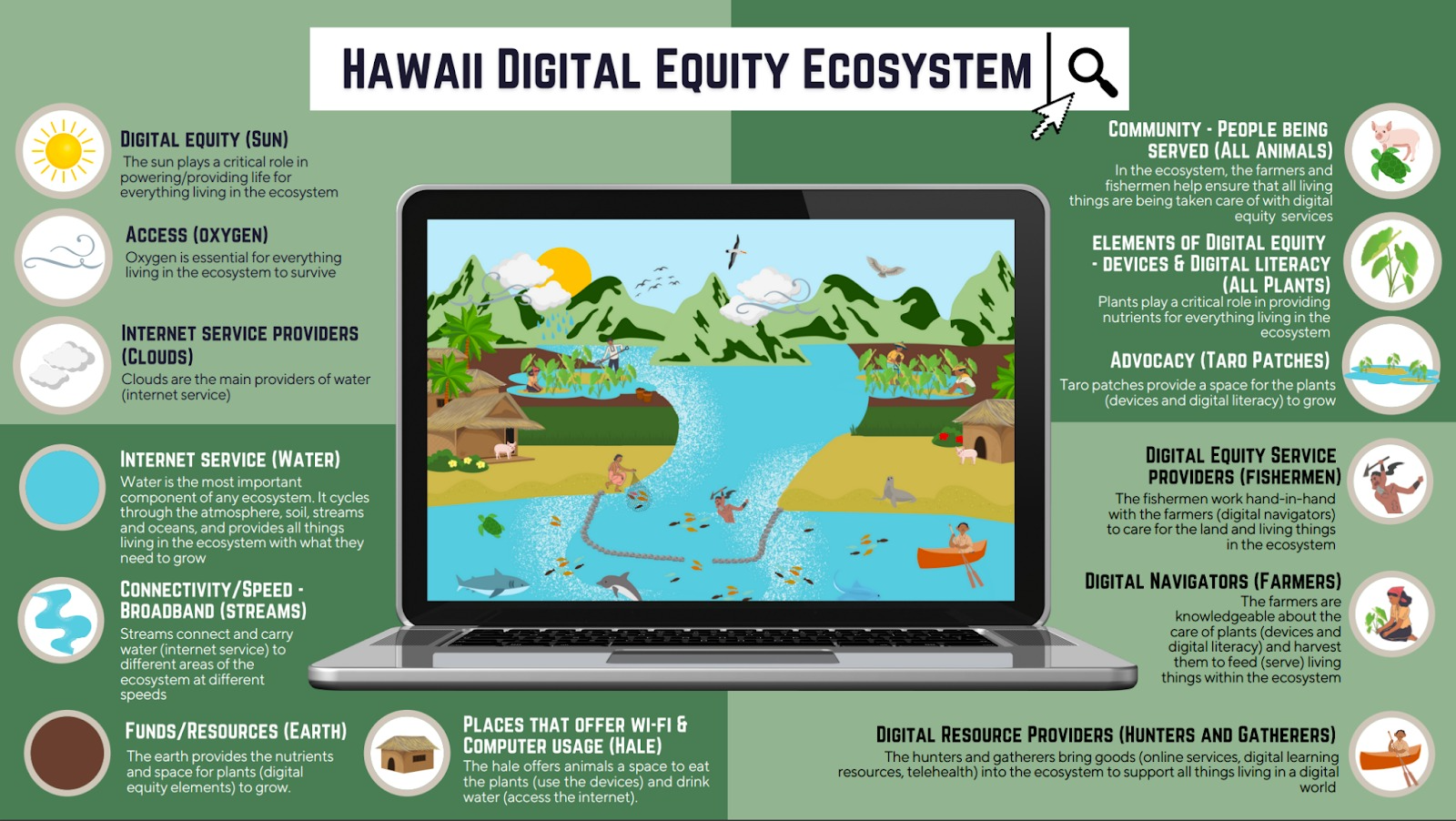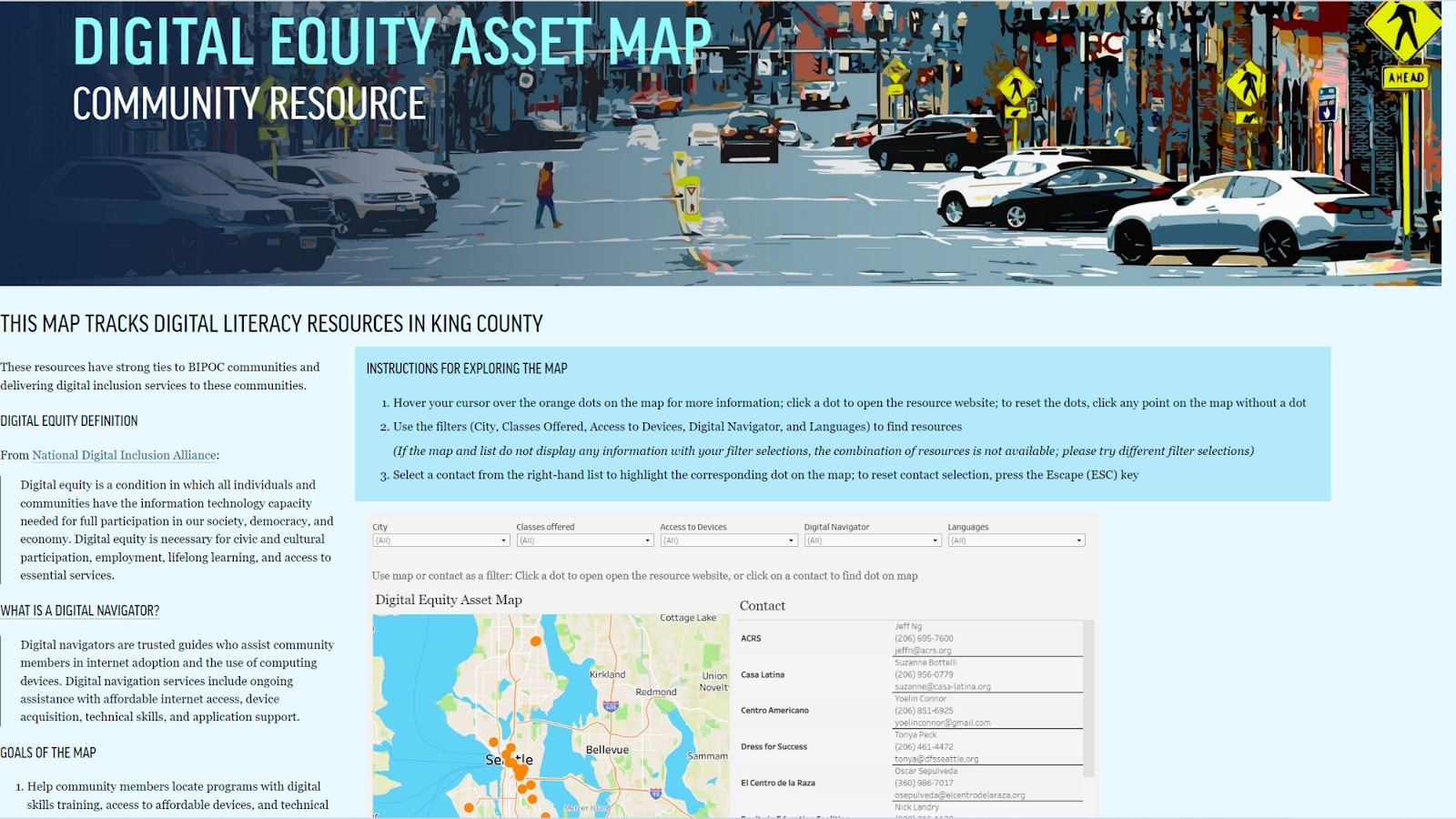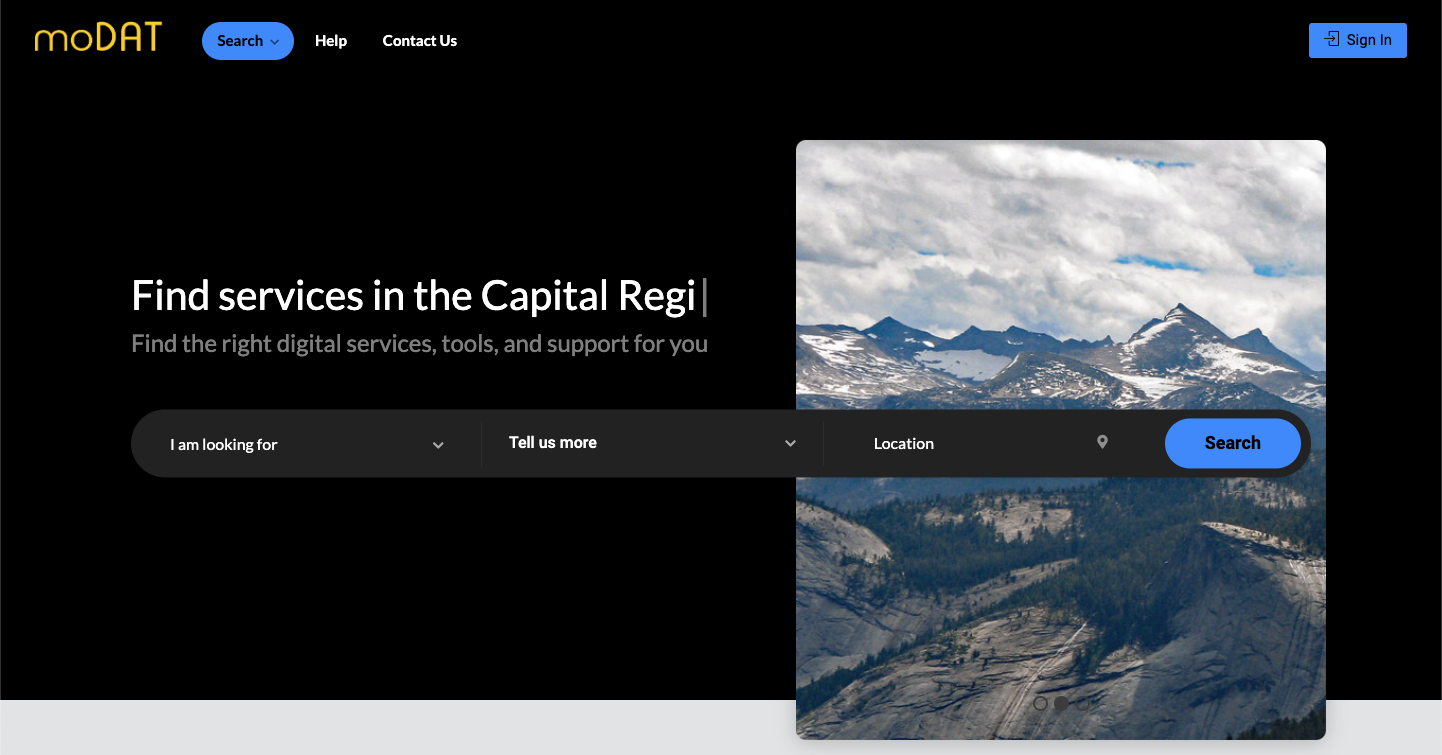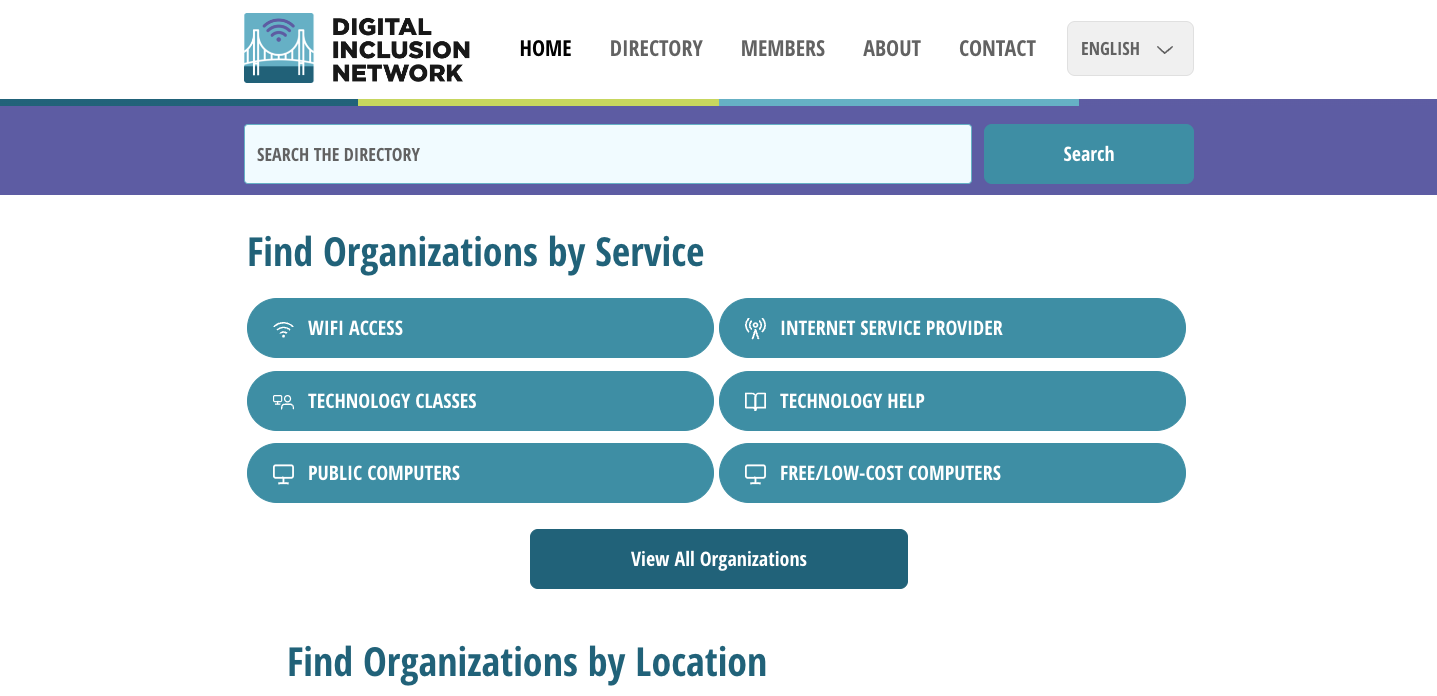Asset Mapping for Digital Inclusion
What Is Asset Mapping?
Asset mapping is an approach to planning and community development centered on identifying and building on a community’s existing resources. Deep community engagement is a key part of asset mapping, used to uncover existing strengths, skills, and connections that can be leveraged.
As an approach to data collection and documenting the current state of digital equity, asset mapping is inherently solution-oriented. This makes it a valuable counterbalance to more traditional assessments of needs and existing conditions, which tend to emphasize the deficiencies and barriers to digital equity that a community faces. While quantifying needs is an important step in the planning process, solely focusing on challenges tends to disregard the aspirations and strengths of community members. Rooted in the concepts of Asset Based Community Development, asset mapping recognizes that, with the necessary resources and structural support, communities possess the knowledge and skills to develop solutions from within.
Asset Mapping and Digital Inclusion
While asset mapping can apply to most planning processes, there are some characteristics of digital inclusion work that make an it especially well suited approach for our field:
- ECOSYSTEM MAPPING: It helps to see the relationships between an interconnected network of digital inclusion organizations and resources.
- CAPACITY-BUILDING: It helps identify opportunities to scale existing programs and find gaps in the ecosystem where there is a need to develop new assets.
- BROADEN THE TENT: It can help organizations that don’t consider their work to be explicitly digital inclusion-related to understand their own connections to digital inclusion.
- RESOURCE DEVELOPMENT: The information gathered through asset mapping can be used to create public-facing tools, such as a digital inclusion program directory, that help people find the support services they need. For examples, scroll down to See It in Action below.
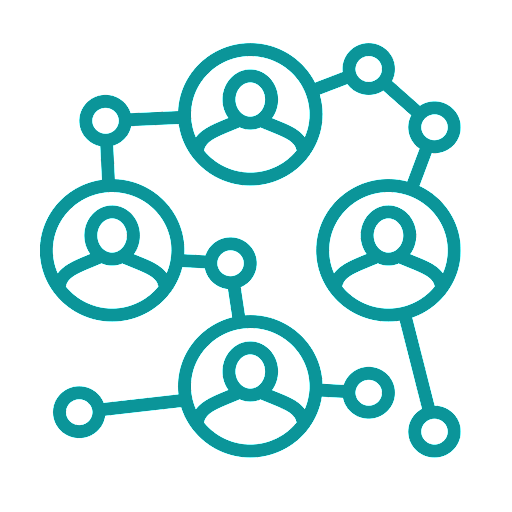
Asset Mapping Best Practices
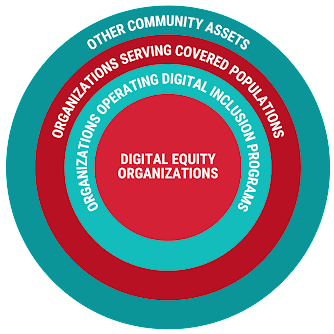
Decide What to Include
Digital equity organizations, such as nonprofit device refurbishers, digital inclusion coalitions, and community technology centers
Organizations running digital inclusion programs, such as public libraries and senior and community centers
Organizations serving covered populations, such as public housing authorities, returning citizen programs, and university agricultural extension programs
Other community assets, such as anchor institutions, ISPs, gathering spaces, and policymakers
Take a Layered Approach
Determine who is best suited to contribute which asset information.
- Local or regional government staff
- Existing coalitions, associations, and partners
- Anchor institutions
- State digital equity and broadband office staff
Consider what level of detail is needed for different types of assets.
Standardize and Aggregate Data
- Establish standard fields and values, especially if many organizations will contribute asset data.
- Define what information is required and what is optional.
- Provide templates or a centralized data input tool to ensure uniformity of data and the ability to aggregate from multiple sources.
Free, Easy-to-Use Asset Mapping Tools
Below, we have made our Asset Inventory Template available as a Google Sheet and as an Excel (xlsm) file, as well as our Survey Template available as a Google Form. Please see NDIA’s Creative Commons policy – you are free to use, replicate, and alter materials, we just ask that you credit NDIA when sharing.
You will find a full explanation of each field in the “Data Dictionary” sheet on the Asset Mapping Inventory Template. Once you have an understanding of what each field is for, feel free to edit, delete, or create fields as you need. These tools are fully customizable. No changes you make will affect the original version, so please make them your own!
Digital Inclusion Asset Inventory Template
Digital Inclusion Asset Survey Template
Asset Mapping Webinar
Coming Soon: Please check back for tutorial videos to walk you through these asset mapping tools diving deeper into community asset mapping for digital inclusion.
See It in Action
Have you used asset mapping in your own community? Have you used NDIA’s free asset mapping tools in the process? We’d love to know about your process, lessons learned, and more examples of digital inclusion asset mapping. We’re also always looking for free-to-replicate versions to share with our growing community of NDIA affiliates. Please email Katie at [email protected] to share your progress and resources with the broader community.

